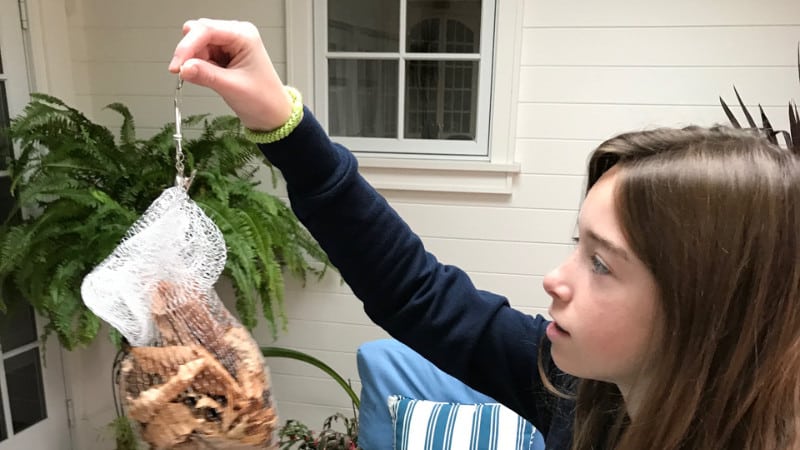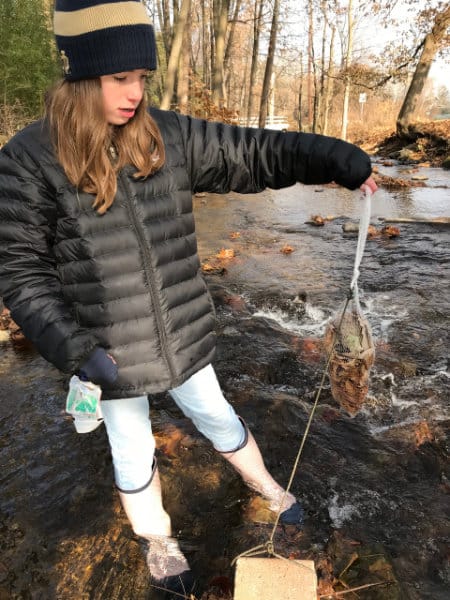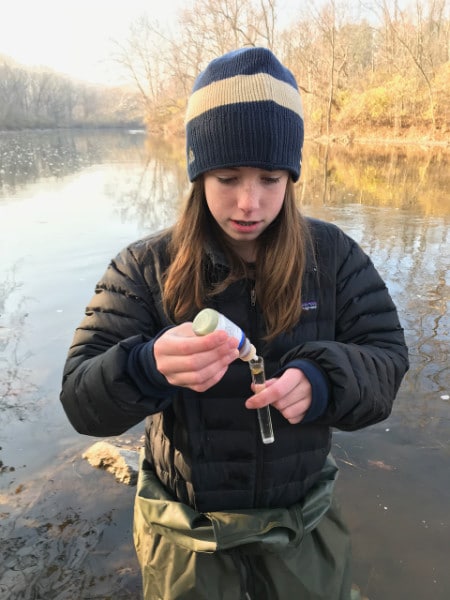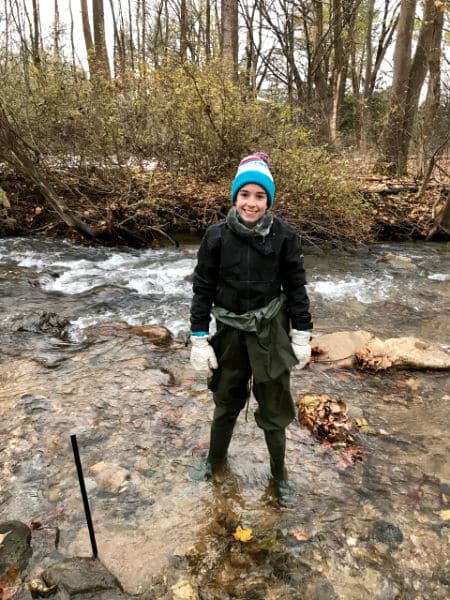
By Diane Huskinson
Before embarking on her science fair project, Maggie Auman, an eighth-grade student at Lancaster Country Day School, had always assumed the freshwater streams in her community were healthy.
“A stream’s health is not always evident to the bare eye,” explains Maggie. That’s true, at least when one doesn’t know what to look for. But soon, her eyes were opened. For two years, Tara Muenz, Mandy Nix, and Lamonte Garber helped her develop a hypothesis and investigate water quality using one of Stroud Water Research Center’s signature teaching tools, the Leaf Pack Stream Ecology Kit.
Originally designed as a research tool by the Stroud Center’s first director, Robin Vannote, the packs are made of leaves collected from native trees within a local watershed that are then dried, placed in mesh bags, and tied to a rock or tree trunk in a stream. When the packs are retrieved several weeks later, freshwater insects and other critters that eat the leaves can be found within the packs and then sorted, identified, and counted to assess water quality. A lack of pollution-sensitive species like mayflies, stoneflies, and caddisflies is an indication the stream isn’t healthy enough to support them.


Maggie deployed the packs into three streams within the Schuylkill River watershed. After three weeks, she plucked the soggy packs out of the streams, took them apart, and with great anticipation and some help from Stroud Center educators, she began what she says felt like a treasure hunt.
“The Stroud Center’s guidance and support helped me really understand and grasp the many different parts of the experiment,” Maggie says. “The setup of the experiment seemed quite intimidating at first, but with Tara and Mandy to help me understand what leaves are native to the area, the importance of the biotic index, and how to properly search the packs for macroinvertebrates, I went through the experiment with confidence and excitement.”
Individuals who deploy leaf packs can participate in the Leaf Pack Network® and engage in the full process of conducting real research while communicating and sharing their results worldwide. The Leaf Pack Network can be implemented into any curriculum and fulfills many state and national science standards. Alternatively, learners who don’t have access to a stream can access the Stroud Center’s virtual learning resources from anywhere in the world, including the Leaf Pack Network Simulation.


In looking at the species and numbers of bugs that had been feasting on the leaves, she was able to assign each of the streams a biotic index score. What she discovered was that one stream had excellent water quality and the other two had moderate water quality. The experiment supported her hypothesis that the leaf packs provided a simple, effective, and inexpensive method for people to monitor the health of their local streams.
“For my whole life, I had looked at streams within my community very similarly, assuming that they were all very healthy. My finding surprised me and taught me that the clean water in my community is more limited than I thought,” says Maggie, adding that she has a new appreciation for and understanding of streams as habitat. “My stream study opened my eyes to a whole new world of life going on within streams. I learned that in the stream, even in the coldest parts of winter when it seems like the water would be too cold to manage, there is abundant life.”

Maggie entered her project, “Leaf Pack = Macroinvertebrate Snack,” into the North Museum Science and Engineering Fair for middle school and high school students in Lancaster County, Pennsylvania. She won first place in the life science category.
Maggie’s father, Tod Auman, recalls how excited and happy she was not only because she won but also because her project brought attention to the health of streams. “After many months of very hard work, she was rewarded.”
“The Stroud Center taught me that even though I am still a young student, I can be an advocate for our streams and make a huge beneficial difference in my community.”
Make a difference in the lives of students like Maggie!
To help students like Maggie learn how to monitor and protect our most precious natural resource — clean fresh water — donate now.



